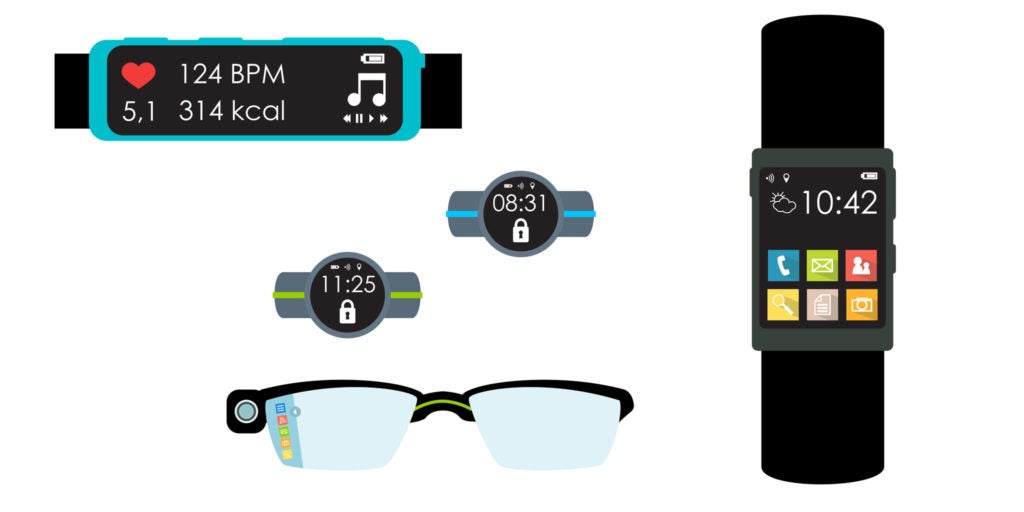
In Christian Stammel’s NYAS talk about wearable tech’s impact on the healthcare market, he gave an overview of the wearables market as well as his take on what’s coming next. Many of the devices he mentioned are consumer-grade, but it gives a peek at what’s possible for clinical trial tools.
For snazzy watch owners unwilling to part with their timepiece, new devices enable a normal watch to function as a smart device. A number of different options exist in the form of a small disc that attaches to the back of a watch, or a smart watch band. The features and metrics gathered vary with the device, but they can monitor activity and heart rates and pair with a smartphone app to provide alerts and other functions just like the Vivofits and Fitbits of the world.
Hearables are another emerging frontier. “The ear is the perfect place for wearables. Perhaps the best place ever. You can monitor on your ear with accuracy that is amazing,” Stammel says. Using a hearable device, information can be collected on biodata and user movement. Earbud-type products are being developed and already on the market, and more are expected in the future. Hearing aids are also incorporating technology in their products.
Google Glass was a step towards eyewearables, but Stammel expects more sophisticated and subtle eyewear devices to be on the market soon. To succeed, the smart component should be seamlessly integrated into everyday items such as glasses or jewelry. Vancouver-based Recon has succeeded in this space by creating ski masks and bicycle glasses that measure heart-rate and speed without compromising the appearance.
Medical smart patches are also considered ripe for development with a variety of products already available. Cyrcadia Health has created a patch-enabled product that helps women detect breast cancer in the early stages. Other companies, such as Avery Dennison and Qardio, have created discrete patches that monitor heart rate, activity levels, respiratory levels and other metrics.
Patches are also being developed to monitor posture, deliver drugs into the skin and even to monitor blood glucose levels. In promising news for the pharma industry, some of these devices are even aiming to be at a clinical grade in the future.
Stammel closed the talk with mention of a couple of other products that he finds unique. Onkol has a home monitoring solution that allows remote tracking of a person’s movements at home, a useful tool for monitoring elderly family members in a non-invasive way. Teddy The Guardian, a smart teddy bear, has also been created with medical sensors in place to monitor the health metrics of children.
Clearly, there’s lots of creativity and innovative products in the wearables market and few signs of slowing down. How do you see wearables influencing clinical trials and healthcare in the future? (Here’s a hint of how clinical trials may be shaped using mHealth technology.)
